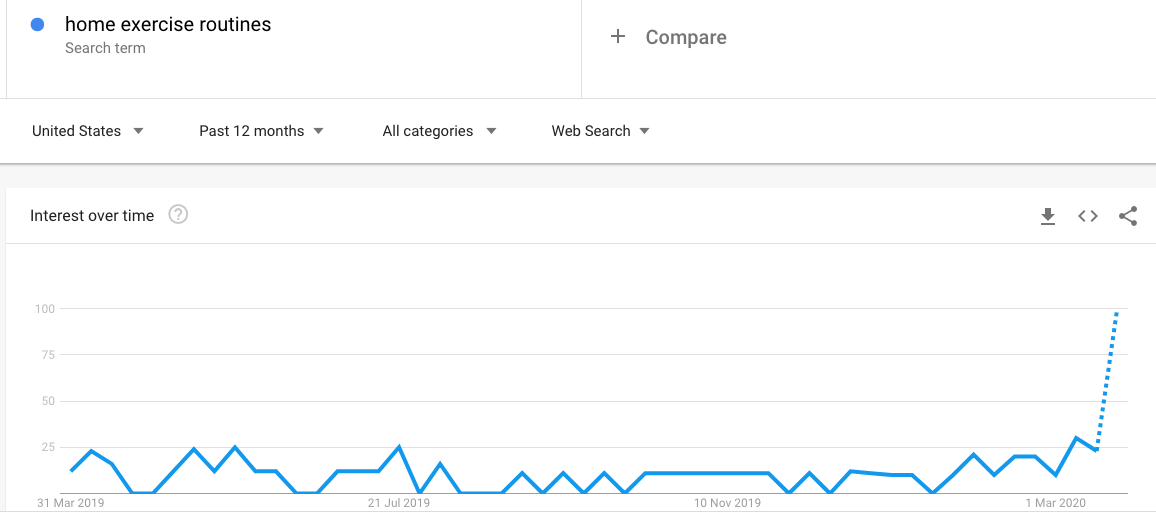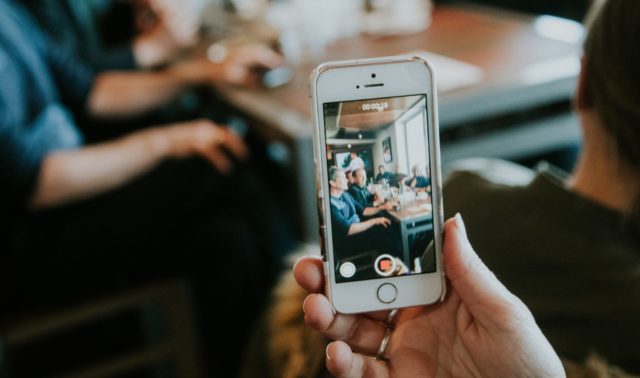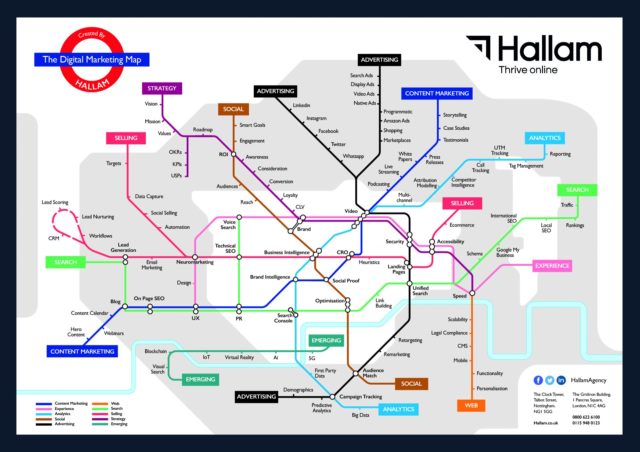The unprecedented impact of COVID-19 has hit many businesses hard over the past few weeks. The sudden disappearance of traditional channels and physical interaction poses significant challenges. Many businesses are still trying to find their feet online while others are looking to adapt their strategy to meet changing demands caused by the biggest shift in buyer behaviour we’ll likely see in our lifetimes.
There’s no two ways about it, we’re in the midst of an economic catastrophe. The role of marketers right now is partly to help ensure their brands are able to survive the coming months.
We must be comfortable dealing with inevitable cost savings that businesses require, but we must hold firm on maintaining a strong brand presence. Those brands that invest in maintaining or increasing their presence during economic downturns will benefit once it recovers. Cutting marketing investment altogether will harm a businesses ability to grow market share in the long-term.
There’s little doubt that firefighting will likely become the order of the day for some businesses, but we also need to ensure our brands are in a position to prosper when the current crisis is over.
In terms of what we can and should turn our attention to in the shorter term, our specialists have clubbed together to offer their advice below for clients looking to navigate the coming months and come out of this crisis in a position to thrive in the future.
How to Pivot Your Advertising Strategy
Our paid media strategists Jack Brown and Martin Jones have noticed lots of panic pausing from competitors that are pulling all spend out of PPC with immediate effect.
This leaves a lot of available impression share and much cheaper clicks and traffic for people that hold strong and don’t panic pause. Even Amazon have stopped paid activity, leaving more impression share available for smaller Ecommerce retailers who in other times may have struggled to compete.
Conversions are not going to stop in many industries. We’re seeing huge demand for certain niches where there’s now no option of bricks and mortar sales. For example, search demand for services such as e-learning, electrical goods and home schooling supplies has skyrocketed over the past week or so.

There’s no denying that conversion paths are going to be longer for most products/services as there is a lot of uncertainty and people are slightly less willing to spend their money on non-essential items.
Video should be your new best friend. Due to search demand, YouTube has switched to SD streaming as default to ease internet usage, this is a clear sign that the channel is saturated with potential customers. If your brand is still able to serve customers, there’s never been a better opportunity to utilise video to build that brand awareness at a time when a quarter of the global population is bored and stuck at home!
Maintaining Organic Visibility
Our Head of SEO, Charlotte Tomlinson, cites studies that have shown that for transactional terms, many industries have seen a decline in organic traffic.
Brands should adapt by focusing on awareness & consideration boosting top-mid funnel informational content. New searches will be arising as we speak and brands that are able to react and create content to target those searches will benefit in the long run from increased brand recognition. For example, any brands with a link to sporting activity could be capitalising with video content to target increased search demand for home exercise and related phrases, which unsurprisingly is booming right now.

As SEO is a long term element of any digital strategy, work that you begin now may not pay off until late Q3 or Q4 2020, at which point it is likely (we hope!) that the peak of this crisis will be over.
Focus effort now on monitoring changes in search behaviour using Google Trends, Search Console or other keyword tools to understand how interest in keywords & topics related to your business and industry are changing, which will give you a hit list of potential topics to write content around.
It’s perhaps more important than ever to keep up to date with industry news, Google like any company is affected by this virus, recently announcing Google My Business Temporarily Removes Features Due to COVID-19.
Finally, if your brands are unable to do business at this time, then take the initiative to undertake legacy content audits (updating old blogs), link audits and technical audits (log files, site speed). Often we can have a good idea of how each aspect is performing but we don’t have the time to dive deep into each pillar – now you have it so don’t let it go to waste!
What About PR?
PR strategist Rebecca Peel suggests that digital PR activity should continue during COVID-19. Of course, nobody can deny that the control around narrative and messaging has become a bit trickier.
We are currently seeing three sets of journalists:
- 24/7 COVID-19 reporting, only want comments related to this.
- Those who are responsible for filling an entire paper/magazine/website and cannot fill it all with coronavirus news – nor do most of them want to. Of course, they are adapting to the changing public interest, and including lifestyle advice relating to the changing ways we live.
- Do not want to cover coronavirus at all.
Our recommendation is to focus most of your Digital PR efforts on the second type of journalist to broaden your chances of getting coverage – but liaising with all three types.
This is a great opportunity to get in touch with journalists with fun, interesting stories that are a distraction from the wider news. Journalists themselves have been quoted on social media multiple times saying they need to put a smile on peoples faces.
Hello #PR friends! We can’t write a whole paper about Coronavirus. We don’t want to. We need your non-CV themed stories more than ever. Fun stuff especially. Email in my bio! #journorequest
— Felicity Cross (@fliccross) March 17, 2020
Newsjacking is probably the most important digital PR technique right now – addressing the how. People’s lives have changed, and we’re all learning how to do new things. Whether that’s working from home, trying to still get in 10,000 steps a day without leaving the house, or homeschooling kids. If you can add to the conversation with simple advice that can genuinely be helpful to people as their lives are changed – it’s got to be a good thing. The issue is when everyone is also pitching out the same content – make sure there is an original angle.
It’s important to note that there should not be any scaremongering news tactics. Review your outreach emails with a fine tooth comb, checking to make sure more than ever before that your content doesn’t come across as exploitative, as it could become a detriment to your relationship with journalists.
If you don’t think you can add to the conversation, and don’t feel your current content is strong enough to cut through the noise – consider banking this time. Turn it into a good thing. If you’ve never before had the time to plan and strategise a large-scale digital PR campaign, now is the time. Use this period to get your brain juices flowing with a team ideation over Slack or Hangouts, get ideas designed, and build a robust media list of future contacts.
Humanising Your Brand on Social Media
Our Head of Social Media, Kieran S-Lawler, is expecting a huge surge in social media usage over the next few weeks as professionals start to adapt to the working from home lifestyle, we’re , therefore, its time to re-imagine your social media strategy as users start to look for added value in social…
If you’re a business who relies on communication with your customers, then social media is your new face-to-face Whilst it’s not a time to be cynical and try and soley make money, it’s a great chance to humanise your brand and build awareness by doing the right thing.
We suggest your new short term strategy features heavily on the following 4 points:
- Utilise social media to communicate honestly and transparently with your customers.
- Think about how you can use Social Media as a way to announce any key information or press releases.
- Groups and a sense of community are needed at this time.
- This is a great opportunity for social good such as discounts, giveaways, support and help for those who need it most.
So even though we all may be feeling isolated, the next few weeks gives our businesses an opportunity to be even more social, more community-led, and offer a social spark of happiness during this period of darkness.
Preparing to Come Out of The Other Side
Outside of traffic acquisition, you should look to minimise potentially lower conversion rates, focus now on enhancing content, improving conversion rates and rethinking messaging to make it clear that you’re still able to do business online and put you in a stronger position when the economic situation improves.
Clearly there’s no one size fits all approach to digital marketing and every strategy will be different depending on market demand, but all businesses need to ensure they’re ready for the day consumer confidence starts picking up as those who are ready to move quickly will profit in the longer term.
Have you just learned something new?
Then join the 80,000 people who read our expert articles every month.







